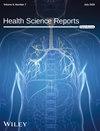Measuring Experienced Utility in the Context of Health Economic Evaluation: A Narrative Overview
Abstract
Background and Aims
Expected utility is deeply ingrained in the field of health economic evaluation, but critics highlight its theoretical flaws, including assumptions of complete information, bounded rationality, and stable preferences. They propose incorporating experienced utility for greater accuracy and suggest certain measurement methods. However, the applicability of these measurement methods in health economic evaluation remains uncertain. Therefore, this article examines the advantages, disadvantages and potential use of these measurement methods in the context of health economic evaluation.
Methods
The measurement methods suggested in the literature include assessing physiological indicators, peak-end perceptions, approach-avoidance tendencies, and retrospective impact. The advantages, disadvantages, and potential use of these measurement methods in the context of health economic evaluation are analyzed using the discourse dialectic method.
Results
Evaluation of physiological indicators is minimally intrusive and relatively objective, but it relies on laboratory data collection, limits comparability across scales, and emphasizes direct experiences. Assessment of peak-end perceptions enhances memory accuracy, yet elicits exaggerated recollections, neglects experience duration, promotes faded peak or overvalued end experiences, and disregards experiences without end. Measurement of approach-avoidance tendencies detects implicit experiences but similarly depends on laboratory conditions, fixates on immediate automatic emotional associations, overlooks unavoidable events or states, and remains indifferent to approach-avoidance conflicts. Evaluation of retrospective impact fosters holistic reflection and highlights temporally extended experiences, yet it fails to account for external information contamination, disregards individual rationalization processes, and overlooks constraints on reflective capabilities.
Conclusion
Each proposed measurement method had drawbacks affecting its suitability for health economic evaluation. However, retrospective impact assessment emerged as the most promising one, although further scholarly inquiry is warranted to examine the theoretical and practical complexities of this approach within health economic evaluation.

 求助内容:
求助内容: 应助结果提醒方式:
应助结果提醒方式:


